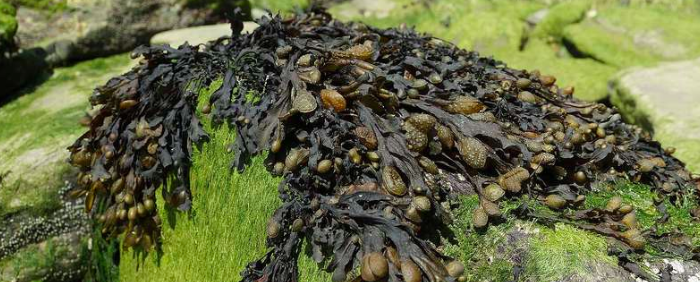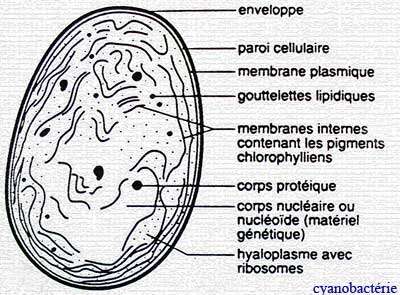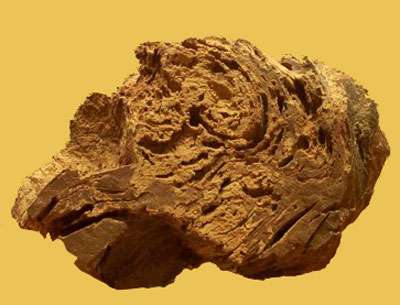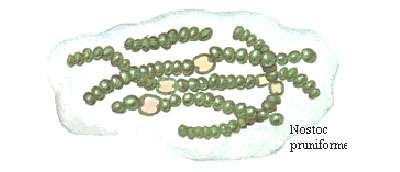
The cyanobacteria appeared early in the history of the Earth, while conditions were not favorable to the life forms we know today. How did they live in these inhospitable times? How have they evolved and survived until today
Where do the algae come from?

There are between 1,500 and 2,500 species of cyanobacteria, they are very difficult to detect, so this figure is very approximate, and there is probably much more to discover.
They are classified in seaweed because they are always found in the water but they are not algae in the botanical sense : we speak of cyanobionts therefore of blue plants!
From heterotrophic cells to photosynthetic bacteria
To know their history, one must go back very far …
The early Earth, 4 billion years ago, has an atmosphere without oxygen and no ozone layer, but rich in various gases: H2S, CH4, NH3, H2O, CO2 etc. Life, as we know it, is not possible in the very young ocean formed by condensation as soon as the temperature of the atmosphere has dropped below 100 ° C.
The first cells are heterotrophic, practicing fermentation which is an anaerobic process. The bacteria autotrophic are appearing there 3.5 billion years ago when the substrates organic prebiotic fermentable begin to decrease and the need to find a carbon source replacement.
The first photosynthetic bacteria conquer a new form of energy: light. They use H2S ( hydrogen sulfide ) as an electron donor . These living beings synthesize ATP through the conversion of light energy into chemical energy (photoconversion). They have the energy needed to make organic molecules in the cell by reducing CO 2 . Such cells still exist today.
The appearance and adaptation of cyanobacteria
A little later, around 2.5-3 billion years ago, cells choose water as an electron donor, these are cyanobacteria. They live in a semi-darkness because of the thick atmosphere and the thickness of the water. The chlorophyll is not enough, the light intensity is not strong enough to activate it properly; they therefore use a more sensitive pigment (heteroprotein): phycocyanin, which gives them this blue hue. There may be other pigments in cyanobacteria in such a way that they absorb in all wavelengths.
They thus reach the highest degree of energy autonomy, using only water and light to make their ATP. They are experiencing a great development and their high oxygen production by water photolysis is the source of aerobic life on Earth, but that’s another story!
This oxygen radically modifies the medium which, from reducer that it was 4 billion years ago, becomes oxidative 2.5 to 3 billion years ago, first in water only , then when the water is saturated with O 2 dissolved in the air 2.4 billion years ago.
There is little doubt as to the presence of a small amount (0.2 to 0.4% of the current content, low but stable pressure) of oxygen in the early Archean atmosphere , which would suggest that the ocean was stratified with an oxidized upper layer and an anoxic lower layer (Towe, 1990).

The amount of oxygen in the air increases from 1% 2.4 billion years ago to 21% today and a layer of ozone forms in the upper atmosphere, which protects life from UV rays, mutagens. A massive extinction of cells accompanies this change, cells that do not support oxygen, very toxic for their structures, even cyanobacteria have to find a way to protect themselves, and they start to make limestone: they are stromatolites, we will come back to this.
It should be noted here that pure oxygen is always toxic to cellular structures and that oxygen does not “move” freely through the cell, it is carefully distributed in protected areas and evolution has selected for that, like the mitochondria.

Unlike plants (which convert mineral nitrogen into organic nitrogen) and animals (which convert organic nitrogen into another organic nitrogen), cyanobacteria (and a few others) are able to take nitrogen directly from the air, gaseous form, and transform it into organic nitrogen. They often live in association with other plants: grasses, ferns, beans… They thus put 100 million tons of mineral nitrogen available to plants on the planet.
Debates on the origin of these cyanobacteria
One of the current theories accepted by the current scientific community is that a primitive cell containing chlorophyll has incorporated or associated with another containing phycocyanin. Is it a predation with destruction of one of the two cells, the other keeping what is useful to him? Or the absorbed bacterium, tolerated by the host brings him the necessary pigment in exchange for nutrition? The result is a bacterium that has two pigments, one of which will make all the history of the plant kingdom and the other allows it to survive in this half-light of the origins of life on Earth.
The reproduction of cyanobacteria
Their only means of reproduction is bipartition, not to be confused with mitosis, which only exists in eukaryotes.
Cyanobacteria do not have sexual reproduction (it seems) even if we know about certain exchanges of genetic material. This question is not clear yet. Some cyanobacteria (Nostoc for example) have large cells called heterocysts where a filament splits in two.
